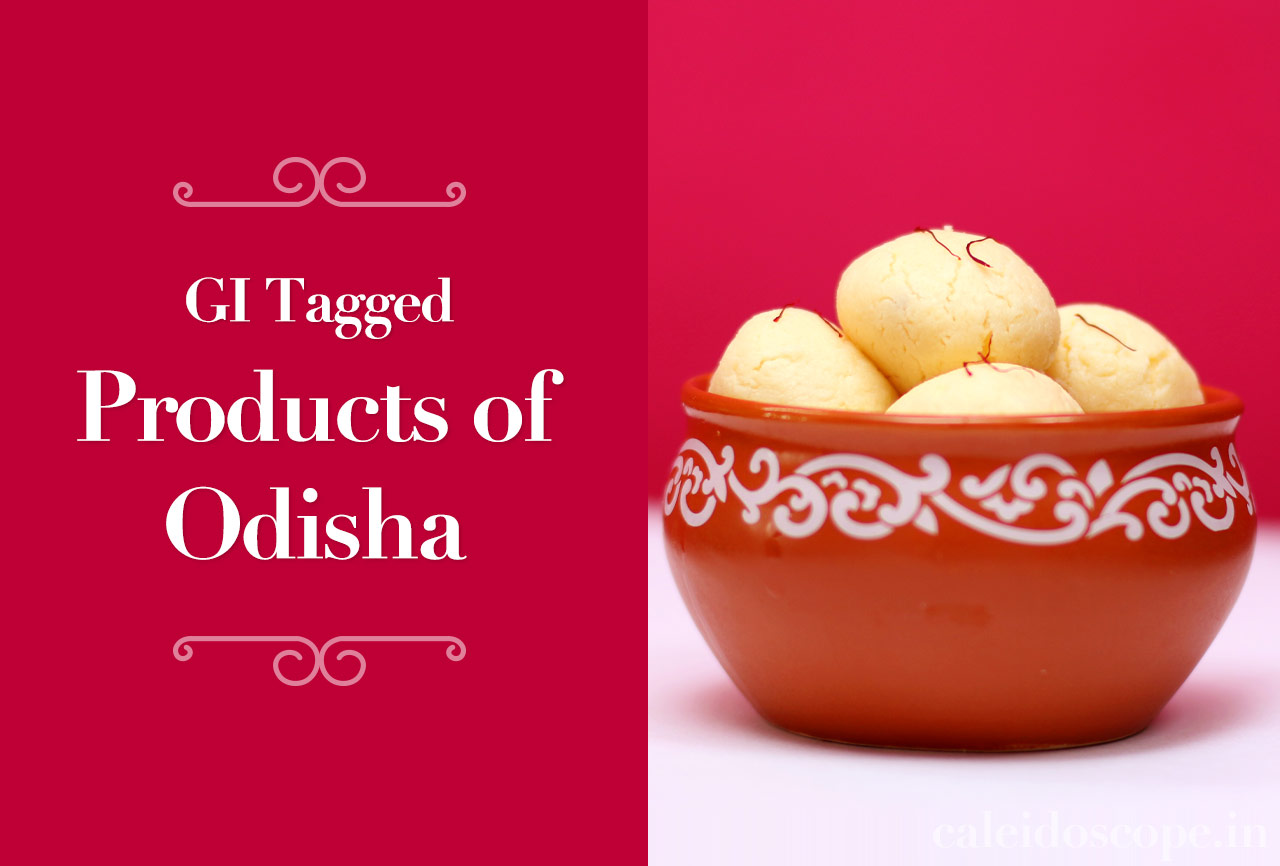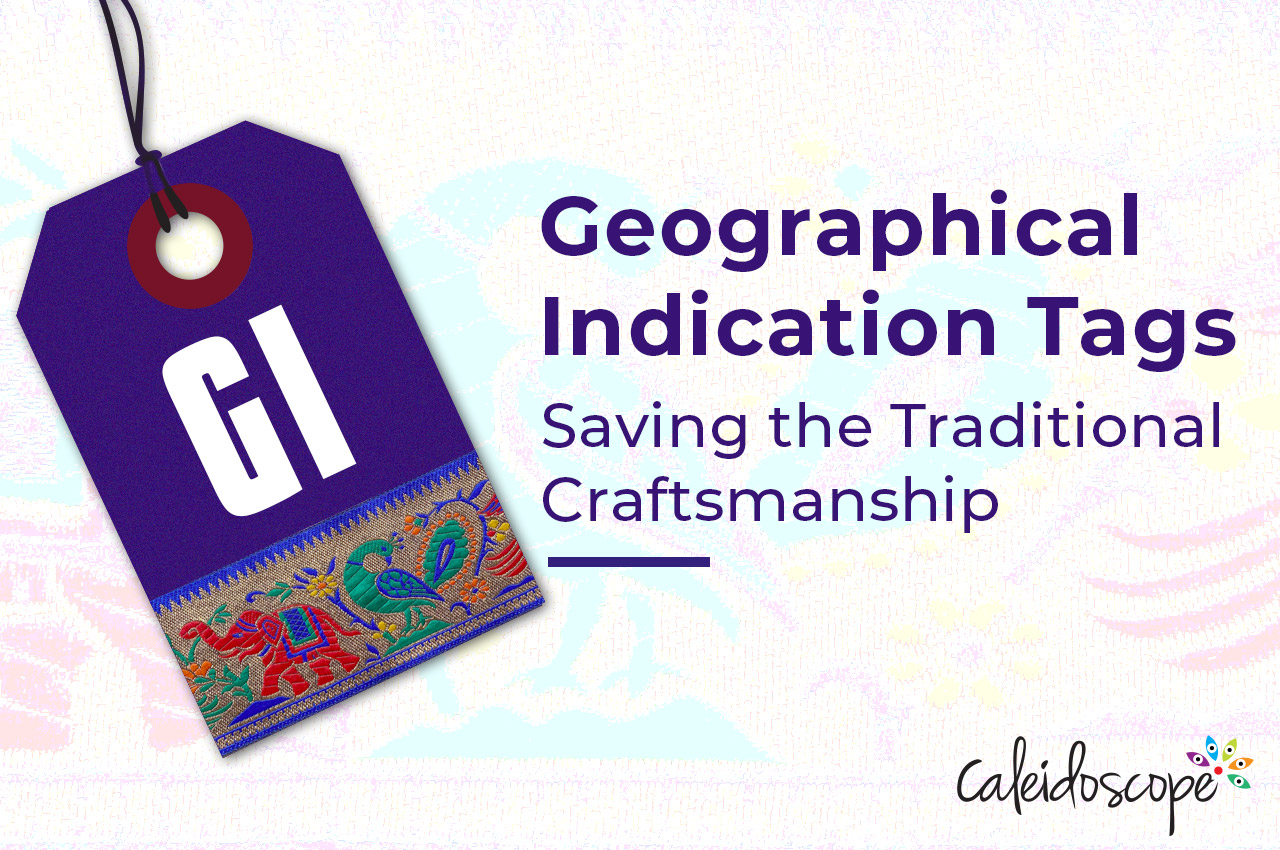
Nestled on the eastern coast of India, the culturally rich state of Odisha has long been celebrated for its vibrant heritage, ancient temples, and diverse traditions. However, Odisha’s unique identity extends beyond its architectural wonders and festivities, encompassing a treasure trove of exquisite products that reflect the state’s exceptional craftsmanship and artistic prowess. From intricate handloom textiles and vibrant handicrafts to mouthwatering culinary delights and exquisite silver filigree, Odisha boasts an array of distinctive creations that have garnered global acclaim, some of which have been conferred the much sought after GI or Geographical Indication Tag.
The GI tag

The GI tag is a certification given to products of a unique geographical origin, or products that possess a unique quality owing to their origin. The tags are issued by the Geographical Indication Registry under the Department of Industry Promotion and Internal Trade, Ministry of Commerce and Industry.
1. Kotpad handloom fabric

The Kotpad fabric was the first product from Odisha to receive the GI tag, in 2005. It is made exclusively by the Mirgan tribe in Odisha. Their hub is the Kotpad village in the Koraput district of Odisha. The fabric is known for its vivid organic colours derived from the aul tree and the unique motifs it uses, using traditional elements of not only the Mirgan tribe but other neighbouring tribes. The elements also include various natural elements of Odisha, like the conch and the sea. The fabric used is usually Kotpad Tussar, and the product’s beauty and quality cannot be achieved elsewhere in the country.
2. Pipili Applique Work

The Pipili applique work of Odisha comes from the village of Pipili in Odisha. It began as a tradition to make decorations and ornate luxuries for the holy trio of the Jagannath temple in Puri, Lord Jagannath, Bhalabadra and Lady Subhadra. Pipili artists were employed for their works for the Jagannath Rath Yatra, where they made a variety of cushions, umbrellas and ornamental covers, including the huge canvas that covers the chariots of the Rath Yatra. The Pipili artists were recognised for the largest applique work created by the Limca book of records, when a 57 metre applique work portraying India’s freedom struggle was made in 2004. It was awarded the GI tag in 2008.
3. Kandhamal Haldi

The Haldi or Turmeric of the Kandhamal district of Odisha is famous for its rich, high quality turmeric, grown by the local tribal farmers of the district. The turmeric traces its excellent quality to the intrinsically organic cultivation practices of the tribals. It grows without minimum human interference, some of which includes rites and prayers to make the turmeric yellow and vibrant. It also provides livelihood to several thousands of tribals, making it an important and unique industry. It received the GI tag in 2019.
4. Pattachitra Art of Odisha

The Pattachitra art of Odisha traces its origins to a beautiful story of devotion. According to legend, the deities of the Jagannath temple are taken for a ritualistic bath on the birthday of Lord Jagannath, the full moon day of the Jyeshta month. Then, the deities fall sick for a fortnight, when devotees cannot have Darshan of their beloved lord. The Pattachitra art of Odisha began as a way for devotees to see and rejoice at the sight of their Lord even during this period. The Village of Raghurajpur located in close proximity to Puri, is known for being the hub for this art form. It is said that every family here has at least one chitrakar or ‘creator of the image’. It was awarded the GI tag in 2008.
5. Bomkai sarees

The Bomkai Sarees of Odisha are known for their low count, coarse, heavy cotton fabric dyed with intensely vivid colours. The Bomkai sarees are usually decorated with floral or geometric themes and have a very contrasting pallu. There is also an extensive usage of dot patterns. The Bomkai saree has its origins in the village of Bomkai in the Ganjam district of Odisha, and its production and style is unique to this region. The GI tag was awarded to the Bomkai saree in 2009.
6. Odisha Rasagola

The famous Rasagola, fought over by two states, Odisha and West Bengal, was individually awarded two GI tags, one for the ‘Bangla Rasogolla’ in 2017, and another for the Odisha Rasagola in 2019, following Odisha’s application for GI tag. Two tags have been awarded GI tag in two very different regions, and though it may seem strange, it is with good reason. The Odia Rasagola has its origins as a prasad for Lord Jagannath, and the technique and taste varies quite a bit from the Bengali Rasogolla. The Odia Rasagola is light brown, owing to the caramelisation of sugar in the procedure, while the Bengali one is white, because it involves usage of sugar syrup with no caramelisation.
Conclusion
The world of Odisha’s unique GI-tagged products offers a glimpse into the state’s rich cultural heritage and unparalleled craftsmanship. From the painstaking Pipili art to the simplicity and beauty of the Turmeric farming in Kandhamal, these products stand as shining examples of the skill, dedication, and creativity of the people of this region. The Geographical Indication (GI) tag not only recognizes the distinctiveness of these products but also ensures their protection and promotes the economic growth of local communities. However, with many products not just from Odisha, but from the whole of the country awaiting their due recognition. These too, shall hopefully soon be granted to preserve the unique beauty of indigenous Indian products.





